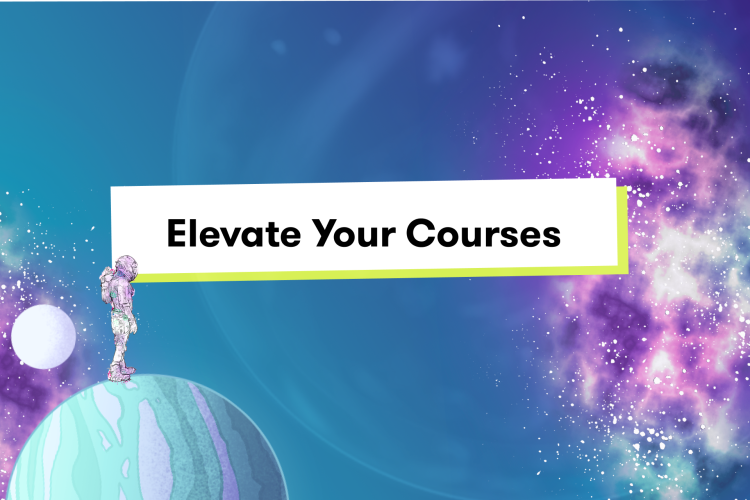Online Courses
Self-Learning 101: Learning How You Learn
How people self-learn and the best self-learning strategies
Author
Mighty Team
Last Updated
September 2, 2025

Table of Contents
- What is self-learning?
- The key parts of self-learning
- Self-learning statistics
- Benefits of self-learning
- Some examples of self-learning
- Challenges of self-learning (and how to overcome them)
- The science of learning how to learn
- How to teach yourself how to learn
- Secrets of learning to learn
- Create a self-learning roadmap
- Conclusion
In this article
- What is self-learning?
- The key parts of self-learning
- Self-learning statistics
- Benefits of self-learning
- Some examples of self-learning
- Challenges of self-learning (and how to overcome them)
- The science of learning how to learn
- How to teach yourself how to learn
- Secrets of learning to learn
- Create a self-learning roadmap
- Conclusion
We learn so much every day, even subconsciously. And ironically, some people who are in formal education struggle to learn. When was the last time you learned or taught yourself something new?
And there’s a difference between being taught, and learning something.
While university education and structured courses still serve as an avenue to learn, it’s easier than ever to engage in self-learning to enhance your knowledge base.
In this article about self-learning, we delve into how people learn, why self-learning is beneficial, and what practices can help you teach yourself better and learn more effectively.
What is self-learning?
Self-learning is a process in which people proactively self-direct their learning journeys, identifying their own learning goals and holding themselves accountable for reaching them. It takes dedication, motivation, and self-direction to be a successful self-learner.
We’ve seen self-learning become more important than ever because of the rise of online courses. When people take online courses, there’s always an element of self-learning to it. And with asynchronous courses (pre-recorded), it can be even more challenging for learners to succeed on their own.
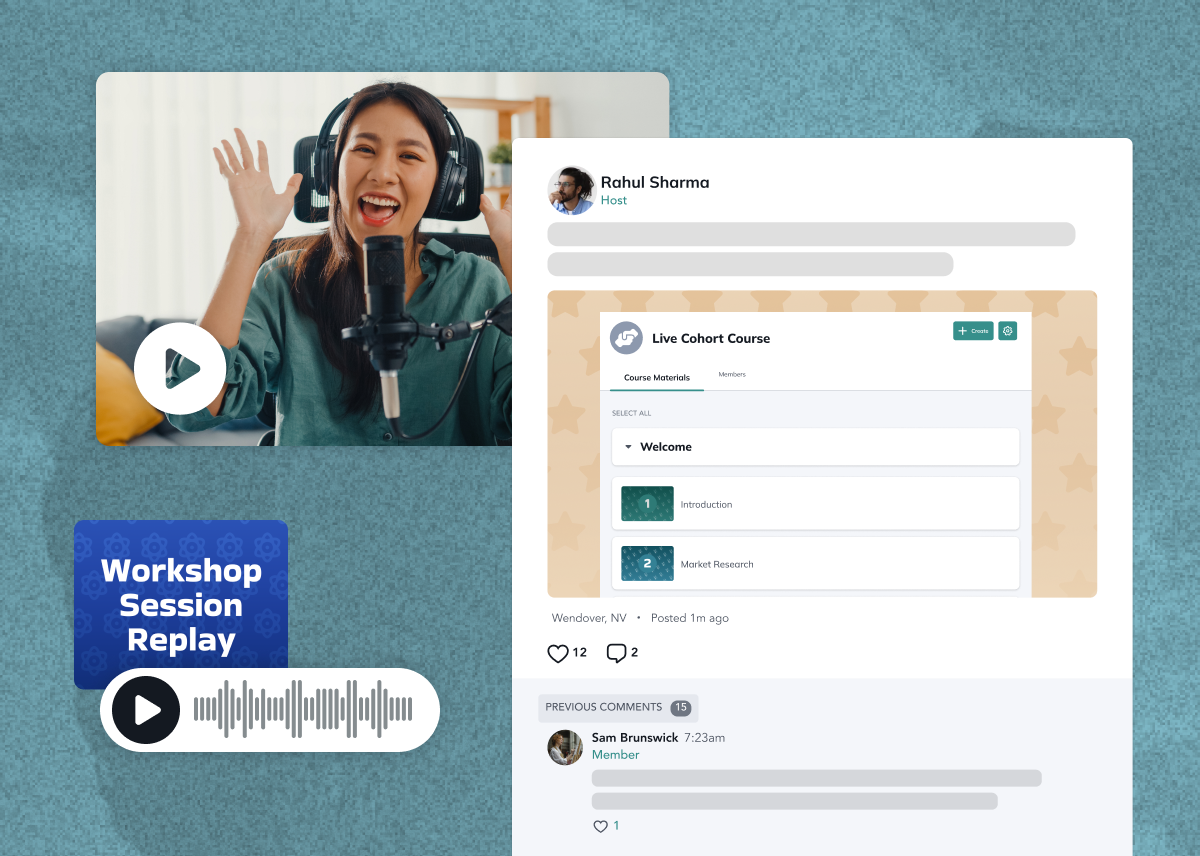
That’s why understanding self-learning is important.
The key parts of self-learning
The key components of self-learning are:
1. Self-evaluation
In formal education, what you learn and how you learn is often decided by someone else. With self-learning, your learning is tailored to YOUR needs.
The first step is to find an answer to the question: What do you want to learn? Why? What do I already know? What do I need to know?
2. Setting learning goals
Having identified what to learn, setting learning goals is necessary. Having a clear goal for learning means we focus on what’s important. And we aren’t just learning for no reason; we’re learning with intention.
This is one of the reasons why adults are often really effective at self-learning–it’s easier for them to understand how the learning fits with their goals than for–say–a high school student who might not connect the learning to goals.
Our minds are tuned to prioritize unfinished goals and desires. Research shows that assigning weight to an activity pushes us to work towards fulfilling it.
Want to be more effective with goal-setting around your self-learning? Set SMART (Specific, Measurable, Achievable, Relevant, Timebound) learning goals.
3. Mobilizing resources
When engaging in self-learning, finding and using credible resources is crucial.
Learning resources can include books, peer-reviewed articles, videos, websites, self-paced online courses, and communities of practice. We all learn in slightly different ways, so the resources you choose need to work for you.
For instance, learning a language? Duolingo or Babbel should come in handy. Prefer something more experiential? Maybe Lingopie will work better for you. Big on immersion? Traveling to a different country could make you multilingual sooner!
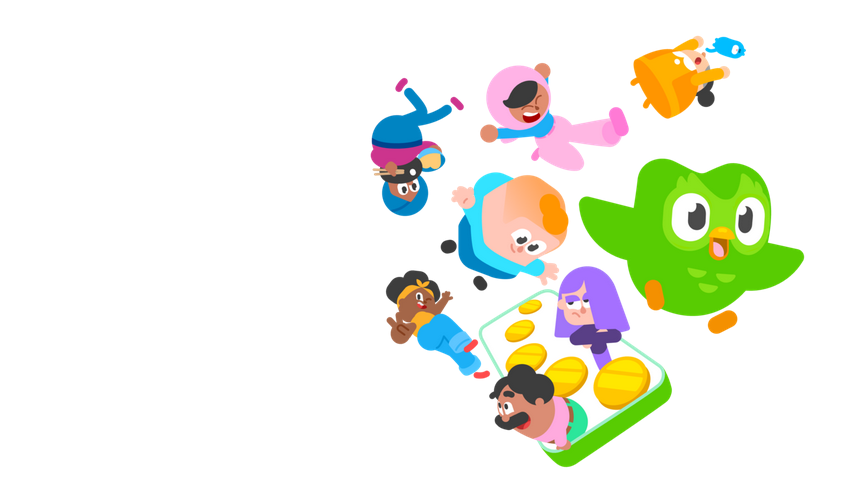
4. Learning actively
Having identified goals and resources, self-learning requires engaging in active learning.
Reading a book or watching a video might not translate to learning. Active learning involves self-testing, learning, revision, teaching, gaining practical experience, etc.
5. Evaluating learning outcomes
Ever pulled an all-night to cram before an exam? Chances are you managed to retain information to perform decently on the exam and then forgot everything.
So, how do you know that your learning practices were effective? The answer is simple: By evaluating your ability to retain knowledge over time and apply it in practice. If it’s done right, self-learning should come with a high retention rate and we should be able to act on and recall what we’ve learned.
We’ll get to some effective learning techniques below.
Self-learning statistics
In the last decade, the online self-education industry has grown rapidly. According to reports, learning and development has a market size of $370 billion globally.
Globally, millions now engage in self-learning through online MOOCs.
In the United States, 84% of people said that self-learning and DIY (do-it-yourself) education would become their learning practice as they grew older.
In developing countries with large populations like China, India, Brazil, etc about 2/3rds of learners are looking to engage in self-learning and upskill.
89% of L&D professionals agree that lifelong learning and upskilling is necessary for individuals to navigate the evolving future of work.
94% of business leaders expect employees to pick up new skills on the job. Which makes learning to learn a much sought-after skill.
For students in university education, self-learning accounts for about 80% of their time. As blended learning becomes widespread, learning to learn is undeniably important.
Benefits of self-learning
1. Autonomy
As Malcolm Knowles said, adult learning is learner-centric and problem-centric.
Instead of learning stuff that feels useless (when was the last time you used theoretical calculus anyway?) self-learning allows you to tailor your learning goals to meet your personal and professional needs.
*Need to build a website or cook a three-course meal?
Self-learning (and very likely YouTube) to the rescue!*
2. Flexibility
We all value flexibility in life.
If you’re juggling work, family, and life, committing to attend a structured course that meets five times a week may be tough.
Maybe you naturally learn better in the afternoon than in the morning (or vice versa).
Maybe you prefer reading to educate yourself rather than pursuing an online course or watching videos.
Self-learning allows you to select resources that work best for you and pace your learning to suit your requirements and schedule.

3. Affordability
Traditional higher education can be very expensive and leave you with years of debt.
With lots of freely available/low-cost learning resources, self-learning often requires far less financial investment.
If you ever get stuck and need help, you can invest in ad hoc support (tutoring, coaching) or turn to online communities.
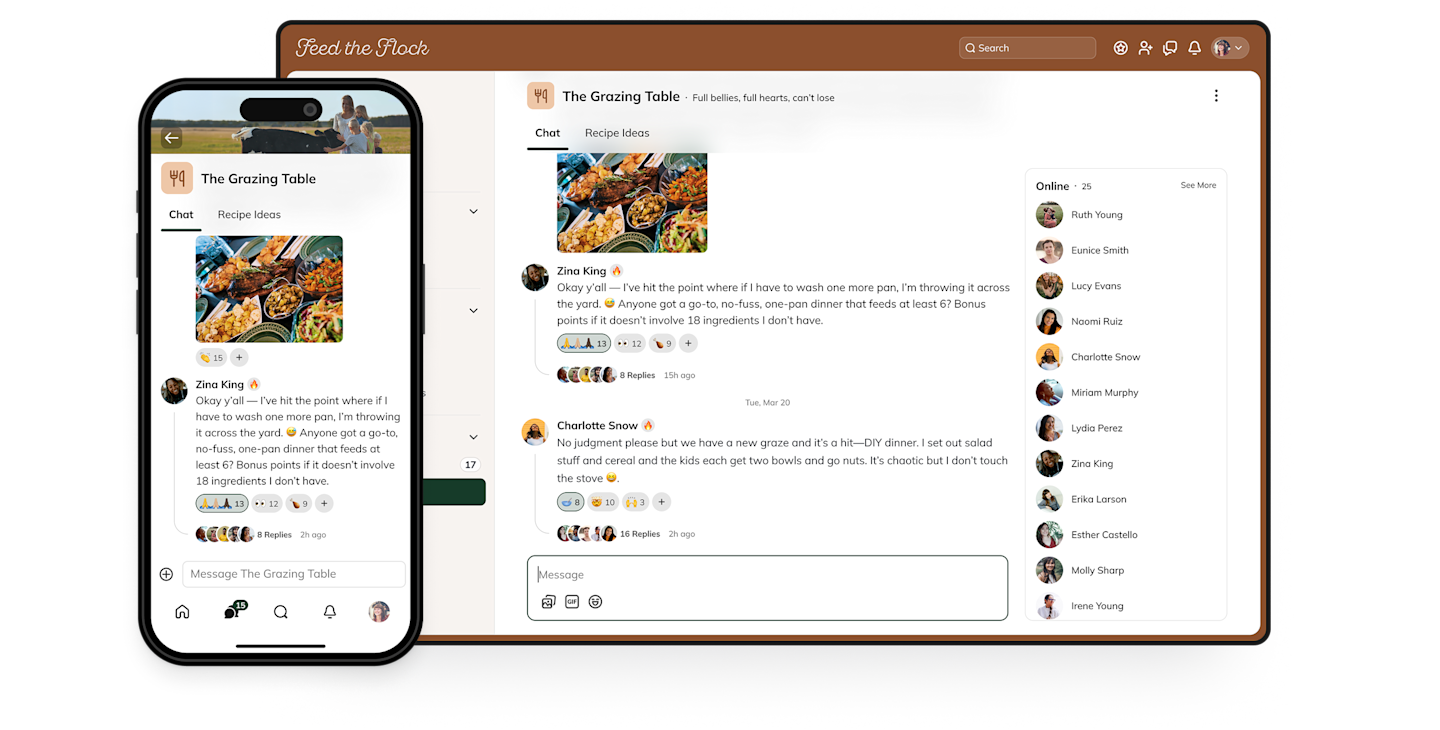
4. Personal growth
Self-learning requires intrinsic motivation and discipline.
If you typically rely on external deadlines and rewards to help accomplish your learning goals, self-learning can kick-start a journey of self-discovery.
You will learn more about yourself - what motivates you, what you enjoy, when you learn best, why you procrastinate, etc. Self-learning will make you a better learner.
This personal growth that can come with self-learning might be just as rewarding as the skills you actually learn. And it’s a skill that will stick with you for life.
5. Professional growth
In the rapidly evolving world of work, self-learning and upskilling will help you remain competitive and facilitate your career advancement.
While companies can institute formal learning and development programs, the onus is on individuals to consistently engage in learning and boosting their skill sets.
Learning a new skill can also help you build an alternate career and income stream.
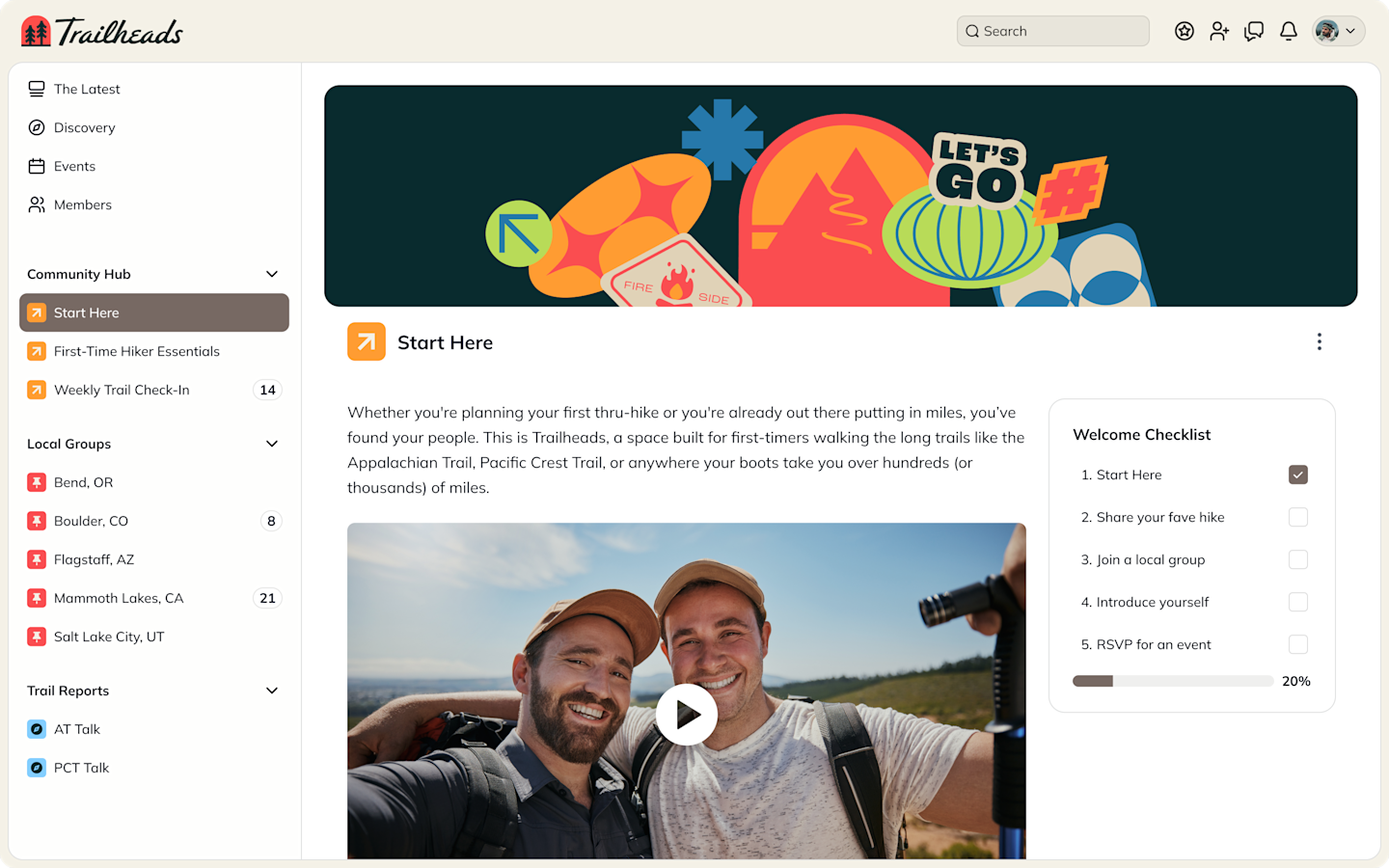
Some examples of self-learning
Watching fitness videos, reading about fitness, downloading a fitness app, and building a tailored fitness routine.
Learning to draw, cook, play an instrument, etc. There are many resources and communities that you can use while acquiring a hobby.
Watching documentaries and reading books to self-educate about the world. Netflix, National Geographic, and Encyclopedias can all serve as resources.
Learning a new language via Duolingo and practicing in a learner community.
Enrolling in a one-off mastermind or local community class.
Completing a course on an online learning platform.
Challenges of self-learning (and how to overcome them)
Setting learning goals: Not knowing where to start and what to learn is the first challenge of self-learning. As you begin your learning journey, it is easy to get overwhelmed. There is so much you don’t know and all of it can seem so very interesting. Our advice? Start somewhere! You can set a one-off learning goal (like learning about Maslow’s Hierarchy of Needs) or develop a curriculum to master a topic (Motivation).
Lack of motivation and discipline: When there’s limited accountability or motivation for self-learning it is easy to just give up. Research shows that only a small percentage (6%) of those who sign up for courses on the learning platform EDx actually complete them. Always remember your WHY. This should be a powerful motivator. Need a bit more motivation? Reward yourself once you accomplish a goal. Want to enhance accountability? Ask loved ones to follow up about your learning.
Limited resources and peer support: The best part about formal education is having an expert to help you in your learning journey. Need resource recommendations? They know the best. Stuck on something? Office hours will help. But there are communities for almost any type of learning; you don’t have to do it alone. Join or build a self-learning community and it will make a big difference for learning goals.
Ineffective learning practices: If you’re new to self-learning, experiment with your learning practices. It helps you figure out what works for you. This might involve trial and error.
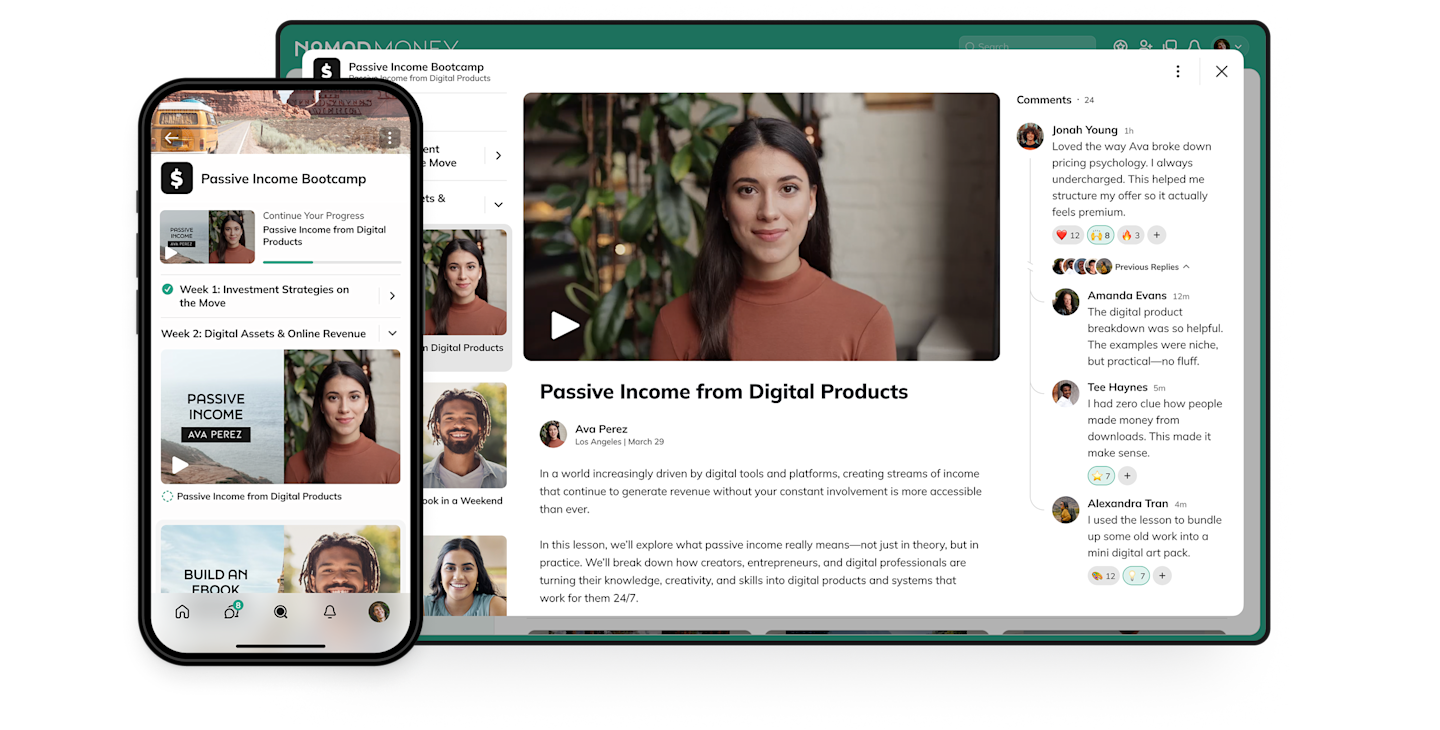
The science of learning how to learn
Research on how we learn is fascinating and surprising.
In the rush of cramming for an exam or working on a deliverable before a deadline, the skill of ‘learning to learn’ does not get much attention. If you’re keen to become a better self-learner, this section provides an overview of some science-backed learning core concepts.
AND if you’re creating an online course, this is important too. If you understand how to build a course that promotes self-learning, and you build it on the best online course platform, you’re setting students up for success.
Introduce them to your learning practice and check if they work for you!
1. Self-testing
Tests can be both exhausting and exhilarating.
Outside formal education, testing is a powerful means to learn and reinforce learning.
In fact, research shows that taking a test on a subject before you learn anything about it improves subsequent learning and retention.
Many adult learners learn through observation and experience. Next time, maybe start your learning practice with a test. This can simply be writing down everything you know about the topic or taking an online quiz. This will help gauge your learning needs better!
Self-testing throughout learning will help in meeting your learning goals effectively too.
Building it into your course: Next time you’re designing an online course, start with a zero-pressure brainstorm to see what students know. It’s a great way to unlock existing knowledge and loosen students up for learning.

2. Distributed learning
Sure, cramming works great in the short run. But if you want to learn better, distributed learning is the way to go.
Humans have limited attention spans. People learn and retain subjects for much longer when they break down and space their study sessions over time.
Let’s say you want to learn a topic. You estimate that it will take you 5 hours.
Rather than a single, 5-hour session, multiple sessions spread across a few days/weeks will help enhance absorption and retention of the topic, making learning more effective.
A little progress each day does add up to big results.
Building it into your course: Plan lots of breaks and consider spreading out your learning. For example, for a cohort course, set an hour a week for learning instead of a full weekend.
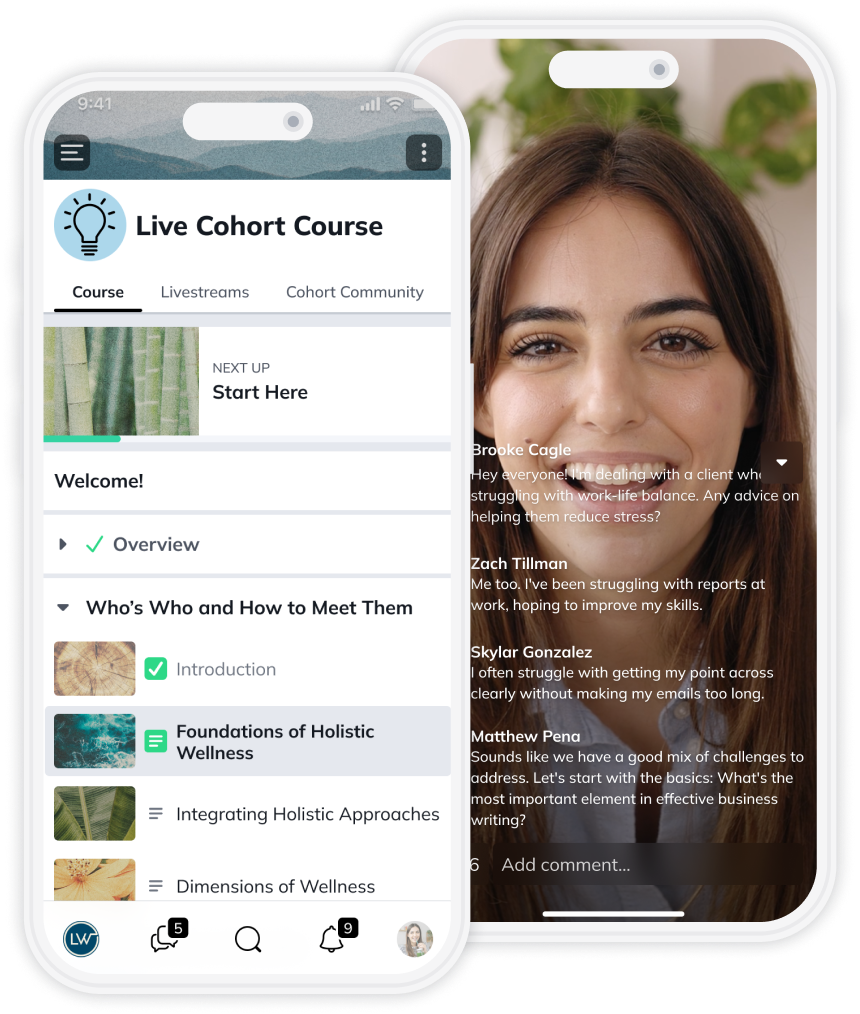
3. Repetition and revision
Complementing distributed learning is the strategy of repetition and revision.
Scientists who studied how memory and learning works initially believed that without use, any learned matter wholly decays from our memory.
Just because you studied something, doesn't mean you learned and retained it.
We now know that memory has two strengths. Storage and Retrieval.
Storage is our ability to remember and use knowledge continuously. For instance, you remember the route from home to work and use it daily.
Retrieval is our ability to recollect nuggets of information. Do you remember the facts you learned in school? Probably not. But coming across them may spark recollection.
Both storage and retrieval can be improved with repetition. So make sure your self-learning practice includes revision sessions where you revisit subjects.
Longer intervals between study sessions are found to improve storage and retrieval. So, revisit a few weeks after you study; followed by another revisiting in a few months.
This will help identify and improve upon weaknesses in your knowledge base.
Building it into your course: Find ways to come back and revisit knowledge at every stage of the course. It could be a review session at the beginning or ongoing quizzes.
4. Interleaved practice
When learning something new, it’s tempting to go all in and focus on ONLY that thing. Research suggests that mixing learning up works better for the brain.
Interleaving is a learning technique where distinct (and related) skills are learned together.
For example, a researcher might alternate between data analysis and playing chess. A fitness enthusiast might swing between yoga and pilates. Want to focus on one subject? Reviewing two distinct topics in one study session also counts as interleaving.
How does it work? Interleaving helps us better grasp each skill/subject individually, and distinguish between them too.
Our daily lives can be riddled with surprises and uncertainty. Interleaving helps sharpen our brains and prepares us to apply our knowledge under varied circumstances.
Building it into your course: Switch up your activities and skill acquisition often.
5. Reflection and self-evaluation
Reflection is a powerful tool that can help cement and enhance your self-learning skills. Take the time to reflect on your learning experience and outcomes periodically.
Reflect out loud, by journaling, or speaking to someone who will listen.
Here are some questions to reflect on your self-learning practice:
What did I want to learn and why?
Did my chosen learning strategies work for me?
Did I accomplish my learning goals? If not, why not?
Can I confidently retain and apply my knowledge?
What would I do differently when self-learning next time?
Building it into your course: Get students to reflect on their self-learning practice in class. You’ll get insights into their learning practice and can help improve outcomes too.
How to teach yourself how to learn
If there’s one learning technique you must incorporate as part of your self-learning practice, it's The Feynman Technique. Devised by the Nobel Prize-winning physicist and renowned educator Richard Feynman, it’s a simple four-step process. Rather than rote learning and memorization, this learning philosophy is guided by the principle of active learning.
1. Choose a topic
We’ve emphasized the importance of setting learning goals previously in the article.
Choose a topic to learn about. Write the title down on a piece of paper.
If you want, begin with self-testing. Write down what you know about the topic. Otherwise, draw on resources and begin with learning everything there is to know.
2. Teach it to yourself or someone else
Write down everything you learned about the topic on a page.
In very simple language, eliminating all jargon. As if you are teaching a small child.
This will help you gauge how much you’ve learned. If your explanation is not clear enough to be understood by a child, chances are that your understanding is not complete.
The famous Albert Einstein quote rings true:
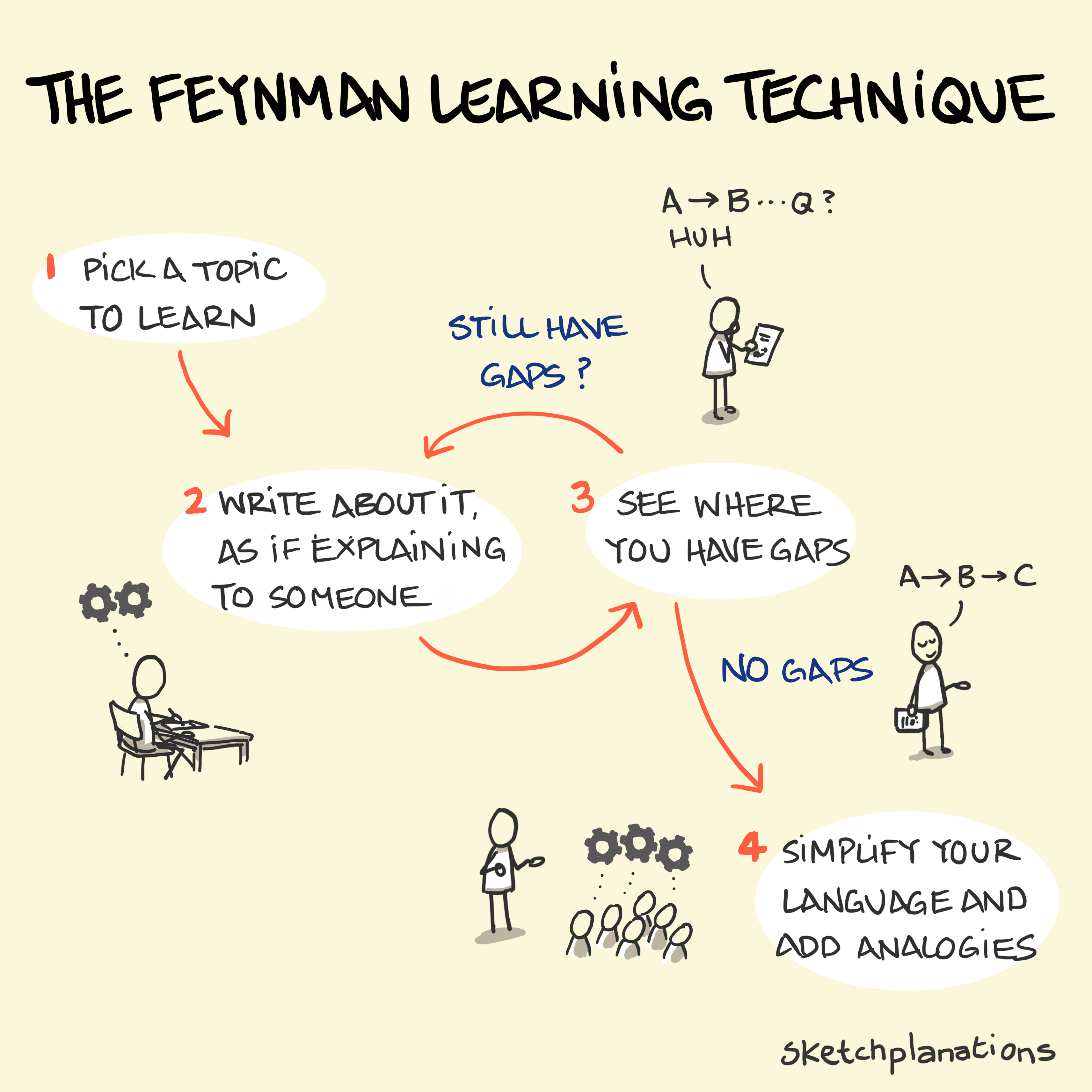
Image: Sketchplanations
3. Identify knowledge gaps
From the teaching exercise, identify what remains unclear. These are the gaps in your learning and areas of improvement.
Revisit your learning resources and begin to fill in these gaps.
Find new sources of information - books, videos, collaborative learning - to further build your knowledge base.
Iteratively go back and forth between learning and teaching yourself.
The second and third steps serve as repetition and will help reinforce learning.
4. Organize and simplify
Consider your explanation of the topic.
Organize the information better and simplify it. Does it give you the complete story?
Create analogies that will make learning stick for you. Research shows that connecting information to prior knowledge improves retention.
For instance, we all likely remember that proteins are the building blocks of life
Coming up with your own learning analogies can be fun!
If there’s still something you don’t fully understand, go back to step 2.
Otherwise, revisit your explanation periodically to retain knowledge.

Secrets of learning to learn
1. Understand how you learn
Self-learning requires self-awareness.
Every person learns a little differently. So experiment with your learning style.
You might prefer to read or watch information. You might need instruction and a structured course. You might learn better in a group. You might learn better alone.
Once you reflect on how you learn, you can steadily implement what works best for you.
2. Learn actively
Take a quiz or write a reflective essay.
If you’re a visual learner, create mind maps.
Teach yourself and others - maybe even create a video.
Apply your learning in practice - side hustles can be great.
Build a learning community of practice. We have whole posts dedicated to communities of practice and community-based learning.
3. DO NOT build a routine
Almost every other article about self-learning emphasizes the importance of consistency and building a study routine.
Find a place where you can study every day.
Minimize distractions. Cut down on social media.
Schedule to study at the same time. Stick to it!
Sure, you can do that.
But, if we follow research on the influence of context on learning (for example, Steven M. Smith's work), NOT following the same routine and allowing some distractions are found to help individuals perform better.
It also helps retain skills for a longer period.
So, switch up your routine sometimes.
Learn at home, in a library or in a new café every week. Play music or not. Study alone or with friends around. Feeling bored? Take a 10-minute break to scroll your socials.
Committing to learning is important. But your self-learning practice does not require military precision. Varied routines will help you perform well in (m)any conditions.
4. Interruptions are GOOD!
Research suggests that interrupting yourself in the middle of learning improves retention over time and makes you more focused on accomplishing your goal.
Think about it. If you have been working on a difficult project, you might have felt stuck at times. Taking a break and stepping away from the task can do wonders.
Consider writers, artists, musicians, scientists, etc. Stepping away from work is often a conscious strategy that helps overcome blocks and keeps the creative juices flowing.
Deliberate interruptions and incubation enhance learning and development.
5. Sleep well
The brain works best when you rest!
You’ve probably heard this a lot. Evidence suggests that sleeping well improves your ability to understand, recall, and retain what has been studied.
Don’t scrimp on sleep. For beauty and knowledge.
Create a self-learning roadmap
You know what most people forget? That self learning is a skill in itself! The more you do it, the easier it gets. That means you’re not just learning how to graft apple trees or make your own jam, you’re learning how to learn. And that’s really valuable in itself.
You can create a plan to foster your own self learning. Here’s a practical breakdown for applying what we covered above.
Define your goals: You can’t hit a target you can’t see. Defining clear goals is a must for self-learning. And you can be strategic. If you’re learning to play guitar, there’s a big difference between wanting to play around a campfire and auditioning for a local cover band. Figure out what you actually need.
Find your learning path: Break down your learning into the relevant skills and the path you need to take to acquire them. You could use AI to help you uncover what those are–it’s a great tool for this! Try this prompt: “I want to learn to do X. What are the main skills I need to have to succeed? And give me a breakdown of steps I need to take.”
Stick the motivation: For most of us, the problem isn’t know-how. It’s staying motivated and showing up. Find out what motivates you, whether it’s having a crystal clear WHY or joining a community to get some accountability.
Do the work: Show up and do the work. Make a bit of progress each day or week. You don’t need to do everything at once, but you do need to keep chipping away to make progress.
Pay for expertise or coaching: One of the best ways to accelerate success is to pay for coaching or expertise. Getting access to someone who’s done it before and can help you get there is really valuable.
Get back up and keep going: When you have a bad week or two, it’s easy to spiral. I’m never going to get there. I always quit. Don’t! Just get back on the horse and keep riding (metaphorically–unless the thing you’re learning to do is riding a horse).
Where to find self-learning resources
If you’re looking for resources on building communities, memberships, courses, or events, check out our resource library! We’ve got lots of great stuff there.
You can also try:
Dedicated communities: We love learning in community. There’s a good chance there are people on a journey you could join. You can check out our case studies to see examples of great communities in progress.
YouTube: YouTube (and other social platforms) have endless hours of free content from some of the top creators in the world for just about everything.
Online course sites: Some online course libraries like Skillshare or Coursera offer a whole bunch of courses for sale–either with a membership or individually.
Your library: Your local library could be an awesome resource. Obviously they may have books dedicated to your subject. But many libraries also offer courses or skills training. Drop in and check it out!
AI Platforms: For a lot of people, Large Language Models (AKA LLMs) are replacing traditional internet browsing. Take your AI input with a grain of salt (sometimes it makes mistakes), but it’s still an awesome resource.

How to build consistent learning habits
Self-learning requires repetition and persistence. And that means habits. Here are some tips for building some great learning habits.
Small and consistent is best: The first time runner who runs 10k probably won’t be in shape to run again this week. This is what happens in self-learning. People try to go all in, to be experts, and it’s unsustainable. Find small, consistent ways to build learning into your day.
But take advantage of flow: Flow state is a powerful thing. And it often shows up with self-learning. You know, that feeling of getting in the zone and not wanting to stop? If you��’re the type of person who hits flow state and leans in for hours, go for it! Use it!
Connect information to what you know: Working from existing knowledge always makes it easier to acquire new knowledge. Find ways to build new learning on skills you already know. For example, you’re learning to play guitar and you know 3 chords, find a song that uses the ones you know and adds 1 new one. It’s easier than learning a song with 3 new chords.
Try active learning: Say things out loud. Sing them. Write them down. Get flashcards, or ask AI to quiz you. Join an online discussion group. Find ways to make learning more active than just reading in your head.
Set up for success: Find an environment you learn well in. Remove distractions. If you’re learning online, you could use a website blocker to help you focus and stop you from drifting over to Facebook.
Accept failure: Rome wasn’t built in a day. Learning takes time. Be prepared to suck at something for a while. Those failures are stops on the road to success.
Try habit tracking: If you’re working every day, try something to visually track your habits. For example, Duolingo celebrates “streaks” of language learning.
Use digital tools: There are more ways to learn than ever. You could take a walk while recording your thoughts, upload a transcript and get AI to critique it. You can use flashcards. You can join communities of dedicated learners from around the world. There’s never been a better time to be a self-learner.
The best topics for self-learning
Finally, let’s end with some of the best topics for self-learning. The internet has made info widespread, but it doesn’t mean everything is suitable for self learning.
Here are a few guidelines for finding things that work well to teach yourself:
Anything where you’re building something with tech: Learning to code. Building websites. Trying video editing. There are tons of great content options online and you can walk through software as you go. The margin of error is small here too. If your video edit sucks, you’ll get better. No lives are at stake.
Hobbies: Most hobbies work great for self-learning. From gardening to photography to playing an instrument, there are lots of resources and information. The biggest risk is spending a bit too much on those rare flower bulbs that don’t make it or a camera lens you don’t use much. But you’ll figure that out as you go.
Results-based professions: In many professions, employers might not care if you’re self taught. They care if you can do the work. From graphic design to social media marketing, people may care more about results than where you went to school.
Skills that aren’t readily taught: Colleges are just catching up on internet marketing. And many aren’t teaching courses in AI yet or the newest software. Traditional education moves slowly. Sometimes if you want to be at the cutting edge, you gotta teach yourself.
Practical skills: Skills like recovering furniture or landscaping could work well with self-learning. But be careful with skills that require formal training or have a huge error cost. If you teach yourself to do your own plumbing, you’ll be facing the bill when your house floods. That might not be worth the risk. There’s a reason plumbers are certified.
Conclusion
Whether you’re in formal education or navigating a professional career, self-learning is a valuable skill. It will help you succeed in the rapidly evolving world of work.
We hope this article has equipped you to confidently embark on your learning-to-learn journey!
And if you’re launching a course, these strategies will make for a better course that serves you and your learners.
If you’re looking for a place to build a course that boosts self-learning, come build on Mighty! You can bring courses and community together, building in engagement and discussions. Whether it’s a live cohort course or a pre-recorded course built on Mighty’s LMS, you can create a learning experience that helps your students succeed.
Ready to start building your online course?
FAQs
1. How can I stay motivated when results aren’t immediately visible?
The best way is to build the learning habit, a bit at a time. And to find a community or people or accountability partner. The first stages of your self learning may not yield massive results. Your goal is to learn to show up and do the work, even if you don’t see progress right away.
That bodybuilder with the perfect physique started somewhere. And they may not have seen any changes in their first 6 months. But effort compounds over time.
Remember what we said above, learning how to learn is a skill in itself. Once you succeed at it once, it gets easier the next time.
2. How many hours a week should I dedicate to see real progress?
There’s no perfect answer to this. Dedicate as much time as you can spare without burning out or losing interest. For some people, that’s 2 hours a day. For some, it’s 2 hours a week. But be consistent and keep going.
3. How do I verify that the material I’m using is accurate and up to date?
This matters in some fields more than others. Knowing how to garden is an evergreen skill (hehe, see what we did there?). But learning a coding language that’s already defunct is definitely a waste of time.
Check the dates on what you’re learning. If you’re doing online courses or YouTube tutorials, make sure your teachers are active in the field and presenting relevant information. Read the reviews.
And check around. For example, if you’re trying to advance your career by learning a piece of software, does it show up a lot in job postings? A bit of simple homework could save you a headache later.
4. What are effective ways to build an accountability system if I’m learning solo?
Here are a few simple ways to create some solo accountability:
Schedule your learning time on the calendar: Setting aside time and getting calendar reminders can help you stick to the learning plan. And if you’ve got a lot going on, you can feel okay knowing you scheduled this time and prioritize it.
Try some AI coaching: Depending on your comfort for AI, you can build an accountability bot. This might be a custom project or GPT that has your learning goals and summaries built in. It’s not strictly based on accountability, but you can ask it things like, “What milestone should I aim for this week to keep progressing?”
Join a community! Communities aren’t just for teaching. They are also for friendship. Lots of people on self-learning journeys still find encouragement and support in a community.
Schedule encouragement emails: Write emails to encourage you! They might come at weekly intervals. You can schedule them, so even if you forget them, you’ll get emails from your future self checking in.
At the end of the day, different people need different accountability. You need to find what you need and what keeps you motivated. Remember, it’s all part of learning how to learn.
5. How do I translate newly learned skills into freelance or job opportunities?
Setting out as a freelancer is exciting! Jumping into a new career? Life-giving!
And if you’re self-taught, it’s even cooler. But it can be a bit scary.
Here’s what you do:
Create a portfolio: Self-taught skills need to be showcased, not talked about. The best way to convince someone to hire you freelance is to show them you’ve done what they need before, and done it well! That’s where a portfolio comes in.
Quantify your skills: Nobody cares if you “created social media posts.” But if you launched a client’s YouTube and it now has 5,000 subscribers, that means something! Use the numbers to share your chops.
Collect feedback: As you do work, collect customer feedback and positive reviews. This can make people feel better about hiring you–especially if you’re freelance! Some freelance sites have reviews built in.
Consider paid tests: Offering a paid test as a freelancer helps lower the risk. Potential clients can try “before they buy.”
Build custom showcases: If there’s a company you want to work for, you could consider mocking up some work to show them. Saying, “This is what I was thinking of for your brand” is a great way to show you’re interested and want to provide value. (But be careful sinking too much time into this.)
6. Are there community-driven sites that blend self-learning courses with peer discussion?
Tons of them! And thousands are on Mighty Networks. You can check out some of the cool showcases in our Case Studies section. Or, start your own community!
7. What apps offer short micro-lessons I can fit into a daily habit?
Here are some cool apps you can try to build a self-learning habit.
Mighty Networks - Lots of our community Hosts offer micro-learning and self-paced courses!
Duolingo or Babel - Language learning
Brilliant or Khan Academy - Math & science
Coursera or edX - Lots of different skills
Elevate or Lumosity - Brain training and cognitive skills
Ted or Blinkist - Learning the latest ideas from authors and thinkers
DataCamp or Mimo - Coding and data science
YouTube - Tons of lessons on every subject
8. Are there platforms that bundle self-paced courses with live mentor feedback?
Yup! Mighty does that! It’s the best platform for mixing courses and community.
Ready to start building your community?
Start a free 14-day trial to explore Mighty—no credit card required.
More like this
Join Mighty Community
Learn the principles of Community Design™ (and see them in action) alongside thousands of creators and entrepreneurs. It's free to join!

Online Courses
Creating a Course
Teaching a Course
Course Platforms
Selling a Course
Communities & Memberships
Community Platforms
Managing a Community
Building a Community
Growing a Community
Monetizing a Community
Content Creation
Creators & Entrepreneurs
Monetization
Content Creation
Starting a Business
Website Builders
Creating & Managing a Website
Events
Event Platforms
Hosting & Marketing Events
Branded Apps
Creating a Mobile App
Coaching Apps
Community Apps
Coaching
Mastermind Groups
Starting a Coaching Business
Coaching Platforms
Filter by Category
Online Courses
Communities & Memberships
Creators & Entrepreneurs
Events
Branded Apps
Coaching
Build a $1 Million Community
This free masterclass went viral—sign up to learn why.










